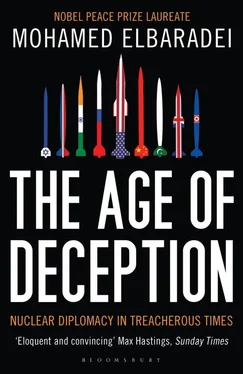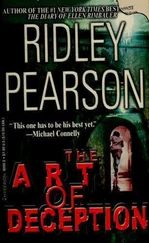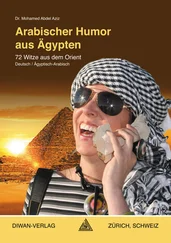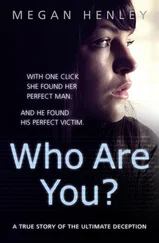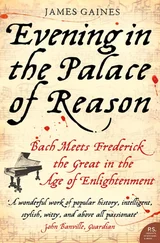This rift was yet another distressing indicator of the North-versus-South divide. Many developing countries believed that the targets of nuclear security threats were primarily the larger industrialized (and mostly Western) countries and felt the West should therefore pay for it. This was shortsighted: the threat was equally significant in smaller, less developed countries, as evidenced by instances we witnessed of attempts to smuggle in nuclear and radioactive material and by the call for our security services worldwide. Indeed, in the years that followed, the IAEA assisted with physical protection upgrades to more than one hundred sites in 30 countries; conducted hundreds of nuclear security workshops and training courses in roughly 120 countries; distributed more than three thousand radiation detection instruments; and secured nearly five thousand radioactive sources in countries across the world.
By early 2004, based on what we were seeing in Iran and Libya, we knew we were facing a third change in the nuclear landscape: the expansion of a black market in nuclear materials and equipment. From a supply and demand perspective, the first two new developments were evidence of demand—whether by states or extremist groups interested in acquiring nuclear material and nuclear weapons technology. The development of an illicit nuclear procurement network headed by A. Q. Khan and his web of colleagues filled in the supply side of the equation. In the coming years, as our monitoring and reporting intensified, our database would come to hold more than 1,300 cases of illicit trafficking in nuclear and radioactive materials. We had begun to uncover a virtual Nuclear Wal-Mart.
What motivates a person like A. Q. Khan? Some answers must be linked to his formative experiences. Khan has said that, as an adolescent in India, he witnessed the massacre of Muslims at the hands of the Hindu majority; he immigrated to Pakistan with his family soon thereafter, during the 1947 partition. Some two decades later, while Khan was in Belgium pursuing his doctorate in metallurgy, Pakistan was devastated by a war with India: its army was decimated and the eastern part of its territory seceded to become Bangladesh. In the early seventies, shortly before India exploded its first nuclear device, Khan went to work for a subcontractor of URENCO, [2] URENCO’s name derives from “uranium enrichment corporation.”
a British–West German–Dutch consortium that developed high-speed centrifuges for uranium enrichment and soon became a major player in the nuclear fuel market.
Was it nationalist zeal that fueled Khan’s endeavors? Was it personal ambition and greed? Or was it religious fervor—a personal quest to put nuclear weapons in the hands of Muslims, who he felt were oppressed? It is hard to say definitively; the IAEA has never been permitted to question Khan directly. But it is clear that when Khan returned to Pakistan to head the Engineering Research Laboratories—later renamed the Khan Research Laboratories—he was equipped with the means to dramatically expand his country’s nuclear capacity: stolen copies of URENCO centrifuge designs and a Rolodex of contacts and companies to procure materials and equipment for uranium enrichment and other parts of the nuclear fuel cycle. It is also certain that Khan’s exploits on the nuclear black market, which appear to have begun toward the end of the 1980s, netted him a sizable fortune, reportedly over $400 million. By the time it was uncovered, the network of nuclear suppliers, manufacturers, and middlemen Khan had built up was sophisticated, complex, and global in its reach.
After we received our first glimpse of A. Q. Khan’s activities in Iran and Libya, Olli Heinonen, the director of the IAEA safeguards group, with responsibility for Iran, dove deep into the investigations of the illicit network. Through the probing done by Olli and a number of his colleagues, we were able to put together many pieces of the puzzle: dozens of transactions, names and locations of key suppliers, and the modus operandi of some of the middlemen. Of course, the major intelligence agencies were all following the same trail, with much larger and more refined operations, in some cases providing us with leads relevant to our primary task, which was to uncover the history of the nuclear programs in Iran, Libya, North Korea, and elsewhere.
Much of the IAEA’s investigative work involved tracing the supply chain for the various components. Addresses, company names, and contacts were extracted from purchase orders, shipping papers, operational records, and, where available, financial statements. Equipment labels were used to identify possible suppliers; serial numbers were traced to specific manufacture dates and locations (unless the numbers had been scraped off). And, of course, we conducted interviews: exhaustive efforts to compare the information provided by Iranian and Libyan scientists and officials with the stories recounted by the middlemen who had played a role.
The picture began to emerge.
The first known transaction of the Khan network occurred in 1987, when two of Khan’s associates and three Iranians had agreed, in a meeting in Dubai, on the terms of a sale for centrifuge components and designs. A one-page handwritten sheet was the only record the IAEA was able to recover pointing to the transaction. The page of nuclear-related items Iran sought to purchase resembled a shopping list. As part of the deal, Iran received a list of companies in Europe and elsewhere from which to purchase other technology essential to its program.
Khan’s closest lieutenant appears to have been Buhary Sayed Abu Tahir, a Sri Lankan businessman and owner of SMB Computers, a family electronics business based in Dubai, which Tahir and his brother had inherited from their father. Tahir’s contact with Khan began when SMB Computers received a contract to sell air-conditioning units to the Khan Research Laboratory. Over time, Tahir grew closer to Khan, eventually acting as his go-between with other middlemen in the nuclear network. When Iran placed a second large order in 1994, it was Tahir who arranged for the shipment of two containers of used centrifuges from Dubai to Iran, using an Iranian-owned merchant ship. Dubai, with its extensive shipping trade and liberal customs regulations, was a convenient center of operations. Khan purchased an apartment on al-Maktoum Road, an elite area of town, from which to direct elements of the network.
Malaysia was another key location: Tahir, whose wife was Malaysian, worked with a precision engineering company, SCOPE, [3] SCOPE, or Scomi Precision Engineering, is a subsidiary of the SCOMI Group, a company in the petroleum services industry. SCOPE’s primary business was to manufacture components that required high-precision machining (cutting, turning, milling, etc.) for vehicles or other engineered products.
to produce centrifuge components. Urs Tinner, a Swiss and the son of nuclear engineer Friedrich Tinner—a longtime associate of A. Q. Khan—helped Tahir by setting up the SCOPE factory in Shah Alam, Malaysia, and overseeing manufacturing operations. The raw material, high-grade aluminum, was purchased in Singapore. Because the parts were manufactured as individual pieces—some of which might have had application in other household or commercial appliances—the management at SCOPE was unaware of the intended end use and the intended end user.
After pursuing their own investigation and in cooperation with other agencies, the Malaysian police arrested Tahir in Kuala Lumpur in May 2004, on the grounds that he posed a security threat. The IAEA repeatedly pressed to meet with him, and after several months of waiting, our inspectors eventually gained access for an interview.
The Agency learned that the network had no hierarchy; it was a loose-knit arrangement of businessmen, engineers, former acquaintances, and, in some cases, family members. There were many middlemen. Some were eventually made public, as their governments sought to prosecute them under various criminal statutes. Gotthard Lerch was a German citizen living in Switzerland. Peter Griffin, a British citizen living in France, was named in court cases in Germany and South Africa as being part of the Khan network and admitted knowing Khan, but he denied involvement in illicit nuclear programs and was not prosecuted. Johan Meyer was the South African owner of an engineering company. Charges against him were dropped after he reportedly agreed to testify against Gerhard Wisser, a German living in South Africa who was allegedly Meyer’s conduit to the network. Daniel Geiges, a Swiss engineer based in South Africa, was also implicated in Meyer’s testimony.
Читать дальше
